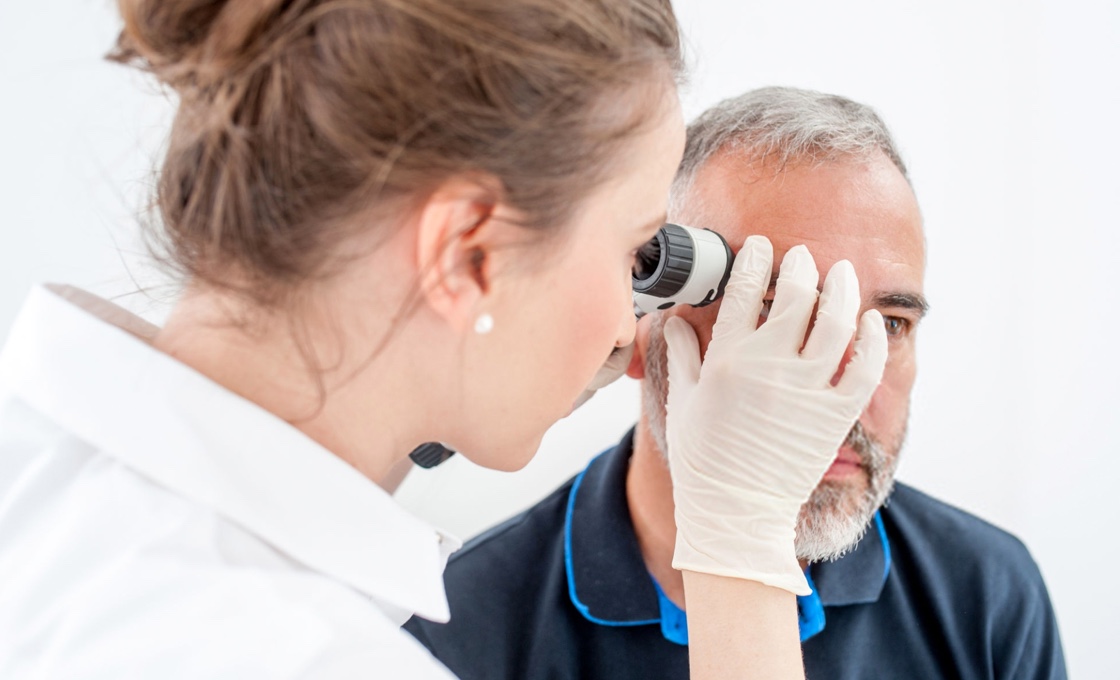

Melanoma Treatment
in Pittsburgh, PA
Is Melanoma Cancer?
Melanoma is the most dangerous and deadliest form of skin cancer. It begins in cells called melanocytes, which produce the pigment that gives skin its color. In comparison with other types of skin cancer, melanoma occurs less commonly, but it’s considered more serious. It can quickly spread throughout the body if melanoma treatment isn’t started early.
Your doctor or dermatologist should evaluate any change in an existing mole. You also need to frequently examine your skin for these melanoma symptoms:
- An asymmetrical mole
- A mole with an irregular border
- A mole that changes color
- A mole that is larger than a pencil eraser
Are There Different Types of Melanoma?
Melanoma cancer has four different types. Here’s what you need to know about each:
Lentigo maligna: This type of melanoma usually affects older people who have sun-damaged skin. It commonly develops on the face, ears, upper torso, and arms. Lentigo maligna presents as a blotchy patch that has uneven borders. The patch can be flat or slightly raised with colors that are usually blue, black, tan, or dark brown.
Acral lentiginous melanoma: Acral lentiginous melanoma is the most common type of melanoma that affects African-Americans and Asians. It typically appears as a brown or black discoloration on the palms of the hands or bottom of the feet. It can also be found under the fingernails and toenails.
Nodular melanoma: Nodular melanoma is one of the most aggressive types of skin cancer. It grows rapidly and affects deeper layers of skin. For this reason, it’s often diagnosed at a later stage. The main sign of nodular melanoma is a bump that feels firm to the touch and is raised above the surface of the skin. The bump usually appears as black or blue, but it can also be red or pink in color.
Superficial spreading melanoma: This is the most common type of melanoma. One of the first melanoma symptoms associated with superficial spreading melanoma is an asymmetrical spot with irregular borders that appears flat or slightly raised. Color variations can range from black, white, brown, tan, pink, red, or blue. While it can form on most areas of the body, superficial spreading melanoma commonly appears on the upper back of men and women, on the legs in women, and on the torso in men.

Melanoma Causes and Risk Factors
Melanoma develops as a result of damaged DNA in melanocytes. This damage leads to the uncontrolled growth of skin cells. One of the primary causes of damage to the DNA in skin cells is excessive exposure to the sun’s ultraviolet light. Over time, this damage can cause mutations that may lead to skin cancer.
In addition to frequent sun exposure, there are other melanoma causes and risk factors associated with its development. These include:
- Experiencing frequent sunburns
- Family history of melanoma
- Fair skin, including people who have light eyes and light- or red-colored hair
- Frequently using tanning beds
- Living at a high elevation or close to the equator

Melanoma Stages
After your doctor or dermatologist makes a diagnosis of melanoma, the next step is to determine its stage and severity level. Melanoma stages range from 0 to IV. Stages 0 and I are the most easily treated because the melanoma hasn’t penetrated into the deeper layers of skin.
Stage II melanoma is considered intermediate, and the tumors are usually deeper than 1 mm. Stage III melanoma is an advanced stage in which the tumor has spread to the lymph nodes. Once melanoma reaches stage IV, it has spread to other parts of the body, most often the GI tract, brain, lungs, liver, and bone.
Melanoma Treatment Options

There are many options available, but the melanoma treatment you receive depends on the type of melanoma you have and the stage of the disease. Surgery to remove the melanoma is the most common treatment for early stages of the disease. Mohs surgery, in which skin cancer is removed layer by layer, may also be a treatment option for some patients with melanoma.
Surgery is also an option for advanced stages of the disease. Deeper excisions of the tumor or removal of the lymph nodes may be needed for advanced melanoma. If melanoma has spread to the lymph nodes or other parts of the body, immunotherapy can be a treatment option. Immunotherapy triggers the immune system’s ability to attack cancer cells.
Chemotherapy is another treatment option used to destroy melanoma cancer cells. Radiation therapy kills cancer cells with high-energy X-ray beams, and it’s also used to reduce the chance of recurrence after melanoma has been removed. With targeted therapy, drugs and other medications target the specific weaknesses found in cancer cells. This is a newer form of treatment that has less severe side effects in comparison to chemotherapy.
1 Location in the Pittsburgh, PA area
Interested in Melanoma? Request a consultation with a skin specialist today.
*Treatment options may vary at each location.Please confirm your desired treatment is offered at your preferred location when scheduling. *Age Restriction.
For patients scheduling who are under 18 years of age (19 in Alabama) please make sure you have permission from your parent or legal guardian to schedule this appointment. Your parent or legal guardian must accompany you on your initial visit and on certain subsequent visits to provide appropriate informed consent.